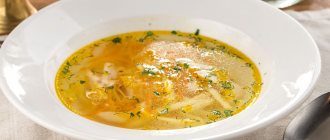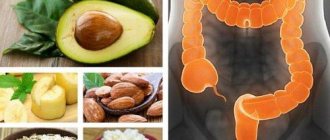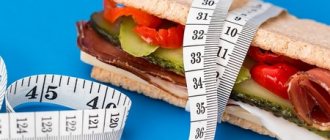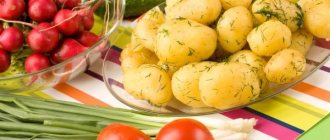FODMAP diet – what is it?
FODMAPs (Fermentable Oligo-, Di-, Mono-saccharides and Polyols) are found in the foods we eat.
FODMAP is an acronym that refers to fermentable oligosaccharides, disaccharides, monosaccharides and polyols.
These terms are the scientific names for groups of carbohydrates that may cause digestive problems in some people. FODMAPs typically consist of short chains of sugars linked together and are not fully absorbed by the body. They can be divided into five groups:
- fructans;
- galactans;
- lactose;
- fructose;
- polyols.
These sugars are poorly absorbed, pass through the small intestine and end up in the colon, where they are fermented by bacteria and can cause symptoms of irritable bowel syndrome (IBS).
This produces gas that stretches the sensitive intestines, causing bloating and pain. It can also cause water to enter the colon, causing diarrhea, constipation, or a combination of both.
Benefits of nutrition
FODMAP elimination diets have been tested repeatedly on tens of thousands of willing people and included in more than 30 studies. Therefore, all the positive properties listed below have been scientifically proven.
Video
Reduction of dyspeptic disorders
People suffering from irritable bowel syndrome may experience a variety of unpleasant symptoms, including excessive gas, constipation, diarrhea, and painful sensations that increase at night or before going to the toilet. Most often, it is pain and bloating, which really negatively affect the daily life and mood of patients. According to reviews, most patients are willing to sacrifice several years of life in exchange for a complete recovery. About a fifth of patients take narcotic analgesics to relieve pain. Thanks to a specially developed diet without carbohydrates that are unsuitable for the body, the condition of patients improves significantly. First of all, the pain in the abdomen goes away, the person gets rid of bloating. An additional benefit of FODMAPs is that it improves brain function and mood.
Please note: According to British scientists, with the help of a properly selected FODMAP menu, you can get rid of persistent bowel problems. If the FODMAP content in the diet is minimal, then most dyspeptic disorders will gradually disappear.
Improving quality of life
Unfortunately, people with irritable bowel syndrome are deprived of those seemingly simple things in life that are familiar to healthy people. The disease significantly limits their activity and vital functions, negatively affects their work adaptation and does not always leave the possibility of self-care. Australian scientists came to the conclusion that FODMAP reduces severe symptoms of the underlying disease, thanks to a questionnaire. Patients noted the degree of symptoms on a severity scale. In addition to its main purpose, the FODMAP diet significantly improves mood and quality of life, and awakens a thirst for life in patients.
Video
How to properly follow the FODMAP diet?
The FODMAP diet has two phases. In the first phase, under the supervision of a nutritionist, high FODMAP foods are eliminated from the diet for 6-8 weeks and replaced with suitable alternatives.
After this, in the second phase, small amounts of FODMAP foods are gradually reintroduced to find a level of tolerance without a return of symptoms. This diet is not intended to be a "diet for life" as many high FODMAP foods are important for stimulating the growth of beneficial bacteria in the gut.
It's important to remember that not all people will have problems with all types of FODMAPs. Some people may have symptoms caused by one or two types, while others may be sensitive to all five. The reasons for this are unknown, but foods should only be limited if they contribute to symptoms.
The diet must be individualized according to the problematic FODMAP, so it is important to seek advice from a nutritionist.
Basic steps for following a diet
Despite the fact that FODMAPs are a set of fermentable carbohydrates, a ready-made diet without their participation is actually a complex nutritional system. To completely switch to a FODMAP diet, you need to follow all the steps.
Stage 1: restriction
At the first stage, you should try to eliminate as much as possible from your diet all foods that are rich in FODMAPs. The first stage can last for a period of 3 to 8 weeks; it is not recommended to stay there longer.
Please note: Why proper diet planning is important - it’s very simple. If a person independently excludes all foods rich in fermented carbohydrates, he will simply deprive his body of all the probiotics and prebiotics that are necessary and important for him. And this, in turn, will provoke the appearance of dysbiosis.
It is strongly recommended to enter the FODMAP diet under the supervision of a nutritionist or primary care physician once the diagnosis is finalized.
Stage 2: food challenge
When the human body gets used to living and functioning without large quantities of fermented carbohydrates, the following experiment can be carried out with them. It is necessary to add to the menu one product at a time from the list of those that have a high FODMAP level.
This is carried out in order to identify the sensitivity of a particular organism to different categories of FODMAP foods:
- identification of the maximum permissible norm of FODMAP elements for the body per day;
- When you include each FODMAP-containing product in your diet, you need to consume it for 2-3 days and watch the body’s reaction.
The maximum duration of this stage should be no more than 1.5 months.
Stage 3: Personalization
After the second stage, a person already has a rough idea of which products are suitable for him, which the body can take without side symptoms, and which ones he reacts negatively to.
Video
The third stage is to include in the diet as much as possible the amount of foods rich in FODMAPs that the body tolerates particularly well. At the same time, you need to ensure that the symptoms of the main disease of IBS do not appear or intensify.
Please note: At the personalization stage, the diet should be as varied as possible; from time to time it includes even those foods that the body does not accept well, but in minimal dosages. According to foreign researchers, this approach will improve intestinal function and significantly improve the quality of life.
In another way, this stage can be called “modified”, since it is developed and selected individually for each person. It can be followed for a long period of time. The FODMAP diet can be said to be a complex nutritional system consisting of three main stages. To get results in the long term, you need to take into account the specifics of this diet and the peculiarities of each stage.
FODMAP substances
The diet limits the consumption of the following sugars (carbohydrates):
Lactose (milk sugar) is a sugar found in cow, sheep and goat milk. The inability to break down and digest lactose is often called a milk allergy, but it has nothing in common with a regular allergy. The correct name is lactose intolerance, caused by a partial or complete deficiency of the enzyme lactase, which breaks down lactose.
Undigested lactose causes bloating, pain, gas and diarrhea, which often occurs 30 minutes to 2 hours after drinking milk and dairy products.
Fructose (fruit sugar) is a sugar found in fruits, honey and syrups. However, not all foods containing fructose need to be restricted on a low FODMAP diet (see below).
Fructose intolerance is similar to lactose intolerance because fructose cannot be fully digested due to a lack of enzymes. Unlike lactose, the absorption of fructose is facilitated by the presence of another sugar - glucose, which rarely causes stomach problems.
Therefore, foods with a 1:1 or less distribution of fructose and glucose are generally well tolerated, while foods with higher levels of fructose than glucose (>1:1), such as apples, pears and mangoes, often cause IBS symptoms.
Fructans are sugars made up of long chains of fructose molecules that are difficult to digest because the small intestine lacks the enzyme that breaks down the chains.
Fructans are mainly found in vegetables and grains. Wheat makes up the majority of human fructan consumption.
Galactans are sugars made up of chains of galactose molecules. Galactans cannot be digested in the intestines for the same reason as fructans - the intestines do not have the enzyme necessary to break down the molecular chains.
Galactans are mainly found in beans, cabbage and lentils.
Polyols are also known as sugar alcohols. They occur naturally in some fruits and vegetables, as well as in artificial sweeteners such as sorbitol, xylitol, mannitol and maltitol.
Gut support for IBS
Duspatalin® 135 mg is designed specifically for the treatment of Irritable Bowel Syndrome. The drug combats a complex of symptoms, eliminating abdominal pain and normalizing intestinal function2. The drug Duspatalin® 135 mg acts at the site of the problem - the intestines and therefore has no side effects from the cardiovascular and genitourinary systems2. You can learn more about Duspatalin® 135 mg tablets in this section.
Co-author of articles, editor - Shimbaretsky Georgy Alekseevich.
High FODMAP Foods
Let's look at a sample list of foods that are high in FODMAPs - carbohydrates.
Vegetables and beans
- garlic;
- onion;
- artichoke;
- asparagus;
- fresh beets;
- black Eyed Peas;
- beans;
- cauliflower;
- celery root;
- falafel
- sauerkraut (for example sour cabbage);
- beans;
- leek;
- mushrooms;
- peas;
- pickled vegetables;
- savoy cabbage;
- soya beans;
- green onions;
- shallot.
Fruits
- apples;
- apricots;
- avocado;
- bananas, ripe;
- blackberry;
- cherries;
- dates;
- feijoa;
- figs;
- grapefruit;
- guava;
- mango;
- nectarines;
- peaches;
- pears;
- persimmon;
- dried pineapple;
- plums;
- pomegranate;
- prunes;
- raisin;
- sea buckthorn;
- canned fruits;
- watermelon.
Meat
- sausages;
- Chorizo.
Cereals, bread, cookies, pasta, nuts and cakes
Products containing wheat such as:
- cookies, including chocolate;
- wheat bread;
- breadcrumbs;
- cakes;
- wheat-based cereal bar;
- croissants;
- crumpets;
- egg noodles;
- cupcakes;
- cakes;
- pasta, wheat more than 1/2 cup, cooked;
- wheat bran;
- wheat cereals;
- Wheat flour;
- wheat germ;
- wheat noodles;
- wheat rolls.
- Bread: grain;
- oat;
- from pumpkin;
Condiments, sauces, sweets, sweeteners and spreads
- agave;
- fructose;
- sauce if it contains onions;
- corn syrup;
- hummus;
- honey;
- jam;
- strawberry jam;
- molasses;
- pesto sauce;
- quince paste;
- sugar-free sweets;
- tahini paste
Sweeteners and corresponding E number:
- inulin;
- isomalt (E953 / 953);
- lactitol (E966 / 966);
- maltitol (E965/965);
- mannitol (E241/421);
- sorbitol (E420 / 420);
- xylitol (E967/967).
Prebiotic products
The following substances may be hidden in yogurts, bars and snacks:
- FOS – fructooligosaccharides;
- inulin;
- oligofructose.
Drinks and protein powders
- fruit and herbal teas with the addition of apples, chamomile, fennel, dandelion;
- fruit juices in large quantities
- chocolate-flavored malt drink;
- meal replacement drinks containing milk-based products;
- soda containing high fructose corn syrup (HFCS);
- sports drinks.
Dairy
- milk: cow's;
- goat;
- condensed;
- sheep;
It may be interesting: Paleo diet - weekly menu for weight loss
List of Low FODMAP Foods
The low FODMAP diet can be challenging, but this list of healthy foods makes sticking to the diet much easier.
Vegetables and Beans
- alfalfa;
- bean sprouts;
- beets, canned and pickled;
- black beans - 45 g;
- Bok Choy;
- broccoli, total - 1/2 cup;
- Brussels sprouts - 2 sprouts;
- zucchini;
- ordinary and red cabbage up to 1 cup;
- carrot;
- petiole celery – 20 g;
- chicory leaves;
- chickpeas - 1/4 cup;
- chilli;
- corn - only in small quantities - 1/2 cob;
- zucchini;
- cucumber;
- eggplant;
- dill;
- Green pepper;
- ginger;
- leek leaves;
- lentils - in small quantities;
- iceberg lettuce;
- radicchio;
- romaine;
Fruits
- unripe bananas;
- blueberry;
- cranberries - 1 tbsp. l.;
- pitahaya;
- cowberry;
- grape;
- guava, ripe;
- melon;
- kiwi;
- lemon, including lemon juice;
- lime, including lime juice;
- mandarin;
- orange;
- passion fruit;
- papaya;
- a pineapple;
- raspberries;
- rhubarb;
- strawberry.
Meat, poultry and meat substitutes
- beef;
- chicken;
- kangaroo;
- lamb;
- pork;
- prosciutto;
- ham and turkey breast.
Fish and seafood
- canned tuna;
- fresh fish, for example: cod;
- haddock;
- flounder;
- salmon;
- trout;
- tuna.
- crab;
Cereals, bread, cookies, pasta, nuts and cakes
- Gluten free bread: corn;
- oat;
- rice;
- basmati;
- chia;
Condiments, sauces, sweets, sweeteners and spreads
- aspartame;
- acesulfame K;
- almond oil;
- capers in vinegar;
- salted capers;
- chocolate: dark;
- milk - 3 squares;
- white - 3 squares;
Drinks and protein powders
- alcohol is an irritant to the intestines, limited consumption is recommended: beer - 1 bottle;
- vodka;
- gin;
- whiskey;
- wine - 1 glass;
- egg white;
- black;
Dairy and eggs
- butter;
- cheese: brie;
- Camembert;
- Cheddar;
- feta;
- Mozzarella;
- Parmesan;
- ricotta - 2 tablespoons;
- Swiss;
- almond;
Menu for the week
The 7-Day Low FODMAP Diet Plan is a nutritionist-created plan that helps you temporarily eliminate FODMAPs, which are proven triggers for irritable bowel syndrome, from your diet.
| Day | Breakfast | Dinner | Dinner |
| 1 | A cocktail of unripe banana, frozen strawberries, flax seeds and almond milk, green tea. | Baked salmon + low FODMAP vegetables + 1 cup cooked brown rice (for fiber). | Fresh spring salad. Select a maximum of 3 vegetables (from the list), add protein, and, if desired, green onions. |
| 2 | 1/2 cup rolled oats + water or lactose-free milk, topped with ½ green banana. | Brown rice noodles and vegetarian shrimp stir fry | Risotto with pumpkin and carrots |
| 3 | Oatmeal with green banana and chocolate | Quinoa Chicken Leg and Parmesan + Low FODMAP Vegetables with Plain Canned Tomatoes. | Salad of lettuce, bell peppers, tomatoes, alfalfa sprouts, dressed with sauce, a cup of weak black tea. |
| 4 | Black coffee, 2 whole eggs and ½ cup oats | Baked chicken with green onions, sunflower vegetable oil, salt, pepper, brown rice. | Romaine lettuce with 120g grilled chicken and sliced hard-boiled egg with olive oil dressing |
| 5 | Black coffee, 3 whole eggs and 85 grams of ham | 170 grams of seared tuna with a side dish of eggplant and mint tea. | ½ cup steamed brown rice, 120 grams grilled chicken with coleslaw. |
| 6 | 60g hard cheese, 2 whole eggs, 1 slice gluten-free bread (toasted) | Beef stew with parsnips. | 170g grilled pork chop with vegetable salad and vinegar dressing. |
| 7 | Omelette with cheddar cheese, bell peppers, spinach, olives and tomatoes, gluten-free toast, coffee. | Sandwich with gluten-free bread, turkey, Swiss cheese, alfalfa sprouts, glass of lemonade. | 170 grams of baked cod and bell peppers fried in oil. |
To create an individual menu, write a letter marked “FODMAP diet” to the author of the project and part-time certified dietician-nutritionist.
5 Low FODMAP Recipes
If a person suffers from symptoms of food intolerance, then a low-calorie diet is the only proven method to determine which foods cause these symptoms.
Below are some low FODMAP recipes to help you get started on a healthy diet.
Soup with rice, potatoes and chicken
- Boil 60 grams of chicken for 30 minutes with the addition of spices.
- Roughly chop 70 grams of potatoes.
- Then chop 1 onion and fry it.
- Next, add potatoes and 30 grams of rice into the broth and simmer for 15 minutes.
- Add salt, add bay leaf and leave to steep for about half an hour.
Omelette with spinach and feta
For the omelet:
- 2 large eggs;
- 1 tablespoon lactose-free milk;
- a pinch of pepper.
Filling:
- 40 grams of spinach leaves;
- 30 grams of chopped feta cheese;
- 10 grams of roasted pine nuts.
Lightly beat the eggs with milk and a pinch of pepper. In a nonstick skillet, melt the butter over moderate heat until it begins to sizzle. Pour in the egg mixture and spread over the pan to form a thin round omelette. Cover with a tight-fitting lid so that the surface of the egg is barely cooked.
Heat spinach and feta in a lightly oiled pan. Spoon the heated filling onto half of the omelette and cover again for 20 seconds. Remove lid and sprinkle with pine nuts. Fold the omelette in half to cover the filling.
New potato salad with arugula
- Boil new potatoes (4 pcs), then add olive oil (20 g), juice of ½ lemon and a handful of chopped parsley. Let it cool.
- Mix with hard-boiled eggs cut into quarters (2 pcs).
- Serve with 1 bunch of arugula leaves and diced cucumber.
Meat and potatoes
Prepare:
- 680 grams of medium-sized new potatoes;
- 1 red and 1 green bell pepper;
- 500 UAH pork fillet, cut into cubes;
- 30 grams of olive oil with garlic;
- salt and pepper to taste.
Preheat the oven to 250°C. Line a baking sheet with aluminum foil. In a large bowl, combine potatoes, peppers, meat and olive oil. Spread the mixture evenly onto the baking sheet. Season with salt and pepper.
Bake for 30 minutes or until meat is cooked through and taste potatoes with a fork.
Stuffed pepper
Ingredients:
- 450 grams of ground beef (or turkey);
- ½ cup tomato puree;
- ¼ glass of water;
- 2 medium red peppers, halved, stem and seeds removed;
- ½ cup shredded cheddar cheese.
Filling:
- diced tomatoes;
- chopped olives;
- chopped green onions;
- coriander.
Preheat the oven to 250°C. In a large skillet, cook ground beef until cooked through. Add tomato puree, water and seasoning. Spoon mixture onto pepper halves, spreading evenly. Sprinkle some cheese on top. Bake for 20 minutes or until peppers reach desired flavor. Remove from the oven and let cool slightly. Serve warm.
Cazuela
Cazuela is one of the most popular Latin American dishes. In its traditional form, cazuela is a thick and flavorful broth made from several types of meat and vegetables mixed together. There are many types of cazuela; each housewife has her own signature recipe for this dish. Despite the exotic name, the ingredients are quite accessible to us. This dish fully meets the requirements of the low-FODMAP diet.
Ingredients for two servings:
- 1 chicken leg;
- 2–3 tablespoons rice;
- 2 medium potatoes;
- 3 sprigs of parsley;
- 1 piece of pumpkin (weight 400–500 g);
- 2 tablespoons vegetable oil;
- ½ carrot;
- Salt;
- ¼ teaspoon cumin;
- 3 cups hot water.
Cooking on the stove:
- 1.Place a saucepan (preferably medium-sized) over medium heat and pour in 2 tablespoons of vegetable oil. When the oil is hot, put the carrots grated on a coarse grater into the pan. Reduce heat to low and gently stir the contents for a few minutes to prevent it from burning;
- 2. Wash the chicken leg, remove skin and fat, and divide it into two parts. Place the meat in a saucepan, add about three cups of hot water and the cumin. Cover the pan and simmer over low heat for 30 minutes;
- 3. It's time to put our cazuela together! We put very coarsely chopped potatoes into the broth (if the potato is medium-sized, just cut it into two parts), pumpkin (cut it into approximately the same pieces as the potatoes), two tablespoons of rice, parsley sprigs;
- 4. Stir, cover the pan with a lid and cook for about 20 minutes;
- 5.Before removing from heat, do not forget to check whether the potatoes are ready.
Before serving, you can add some cilantro and garlic directly to the plate.










